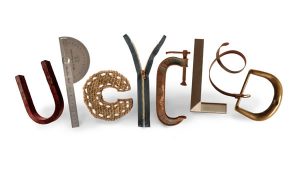How Green Dot Upcycles Plastics and Agricultural By-products
Upcycling recycled plastics and reclaimed biobased materials has many advantages – it preserves non-renewable resources, decreases carbon emissions, increases markets for recycled plastics, and increases the value of agricultural crops.
Upcycling is a term to describe the reuse of discarded objects or material in such a way as to create a product of a higher quality or value than the original. It’s not a new idea – just think about how used scraps of cloth were used to make unique quilts. Today, you can find countless examples of projects on Pinterest that use discarded products or packaging to create useful and often beautiful objects like lamps, chairs and tables.
At Green Dot, we think of upcycling in terms of materials – combining materials that may otherwise be discarded to create something better. These materials allow manufacturers to lighten the environmental footprint of their products and create valuable markets for waste materials and agricultural by-products.
While recycling plastic can lessen the environmental impact of the products we use every day, upcycled materials can have a much greater environmental benefits. Collection of recycled plastic is often limited to polyethylene (#1 and #2 – plastic bottles and milk jugs). Few cities have systems to recycle polypropylene (#5 – yogurt and butter tubs). When they are recycled, these plastics are most often used for single use throw away items, because the recycled plastics lose impact strength and durability when they are reheated to be re-pelletized. So, even when recycled, plastics to quickly find their way to the landfill.
Green Dot has developed biocomposite formulations that combine reclaimed biobased materials, like wood and natural fibers, with recycled plastics to make a stronger, more durable material. The natural fibers reinforce and strengthen recycled plastic to produce biocomposite plastics with added strength and durability. These biocomposites materials are then used to make a wide variety of durable products, from furniture, to toys, to construction materials. These products are made to last – so plastic and waste materials stay out of the landfill.
The use of biocomposites also expands markets for recycled plastics and agricultural by-products, like wood-flour, corn cob, or wheat stalks. The added value to crops encourages producers to divert these materials from the landfill. Using these reclaimed biobased materials also lessens the amount of petroleum-based nonrenewable feedstocks for plastics, preserving our natural resources and lowering greenhouse gas emissions.
We believe that the markets for agricultural by-products and recycled plastics will continue to expand. We’re committed to helping product designers and manufacturers use these materials to make high-quality, durable products that consumers love.



